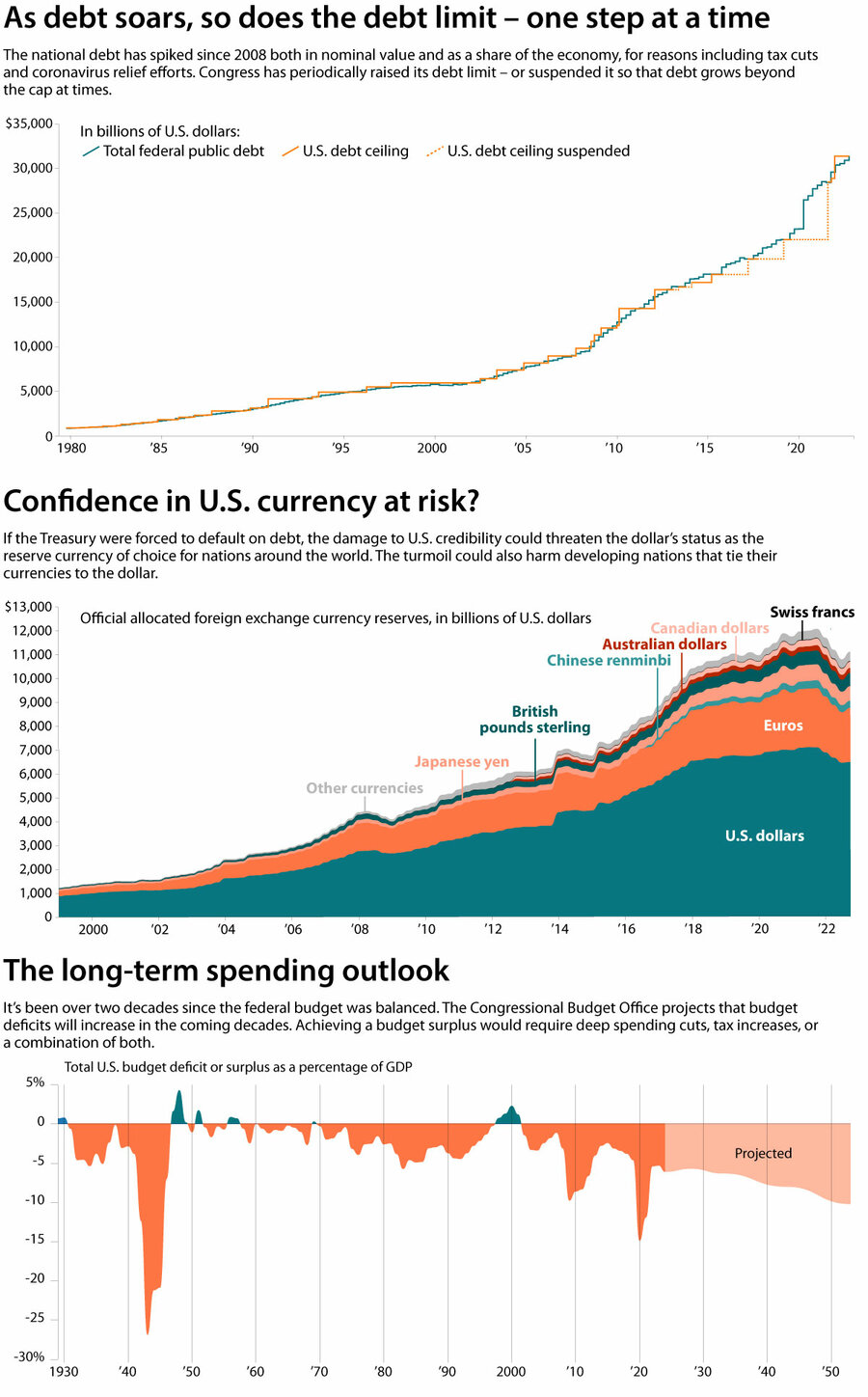In charts: The debt (limit) also rises
Loading...
Democratic and Republican leaders are bargaining over a goal that’s beguiling in both ease and difficulty: agreeing together to boost the nation’s self-imposed debt limit.
It’s easy because, when push comes to shove, the option of not raising the limit is untenable. The United States needs to borrow, because at present, federal spending outstrips income. If the borrowing limit is not raised, the U.S. will face the prospect of default on its debt and significant harm to the economy.
It’s hard because, whenever it’s time to raise the limit anew, the two sides often wrangle. Unless the same party controls the White House and both houses of Congress, one side can use the urgency as leverage in pursuing its fiscal policy goals.
Why We Wrote This
A story focused onWhen the U.S. government bumps near a Congress-imposed cap on borrowing, everyone agrees it’s prudent not to force default. But these moments can be leveraged politically for fiscal bargaining.
The graphics with this article highlight the urgency of the nation’s debt challenge and the risks of debt limit brinkmanship.
Why has the debt surged in recent years? For a combination of reasons, including perennial budget imbalances, the deep global recession around the 2008 financial crisis, the Trump tax cuts, and coronavirus relief spending.
If nothing is done to mend fiscal imbalances, the Congressional Budget Office forecasts mounting difficulties between now and 2051. Primary deficits (not including interest payments) would more than double as a share of the nation’s gross domestic product, compared with their 50-year average of 1.5% of GDP. The cost of paying interest on the debt would more than quadruple, to about 7% of GDP.
A crisis of confidence among the U.S. Treasury’s creditors, while not guaranteed at any particular point, would become a rising risk. The scenario is reminiscent of an Ernest Hemingway character who, in “The Sun Also Rises,” says he went bankrupt in two ways, “gradually and then suddenly.”






